2025 Volvo EX30 First Drive: Little electric ute makes a big statement
After driving the 2025 Volvo EX30 on the recent media launch in Spain, we have multiple intriguing takeaways. Above all, however, we suspect the central one for most prospective buyers will be the little EV crossover’s base price: $34,950 for the Core model, or $36,245 with shipping.
And, you’re probably thinking, it’ll be even more tempting if that cost can be reduced by $7500 in federal tax credits. That, unfortunately, will not happen; the EX30 is built in China, and as such isn’t eligible for such incentives according to Inflation Reduction Act stipulations demanding final assembly in North America.
Under 40 grand for a premium-badged daily driver and a usable range still sounds relatively compelling, though.
The EX30, which should be at A Dealer Near You by late spring 2024, comes in three basic flavors: A regular-range (215 miles) model that won’t be sold in the U.S.; an extended-range (275 miles) rear-wheel-drive model, and a dual-motor version (265 miles) that has a motor in front and in back, and is therefore all-wheel-drive.
That all-wheel-drive model is considerably pricier than the rear-drive extended-range one, but even checking every option box on Volvo’s configurator won’t top $50,000. During a few days in Barcelona, we sampled both the Single Motor Extended Range model and the Twin Motor Performance versions.
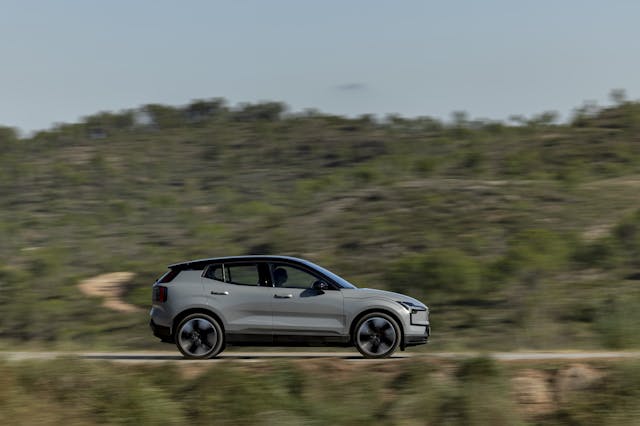
Let’s get the horsepower ratings on the record: 268 hp and 253 lb-ft of torque for the single motor, and 422 hp and 400 lb-ft of torque for the twin motor. If that sounds like the little Volvo might make a decent autocrosser on the right tires, we agree, although the suspension may prove a bit soft.
When we say “little,” we mean it. The EX30 looks bigger than it is, but in reality it is more compact than a Hyundai Kona. Front seat room is reasonable for two six-footers, but rear seat room is cramped for average-sized adults. The second row will supposedly hold three passengers, but pity that middle person. For kids it’s fine, and everything about the EX30 shouts young family, well-to-do college kid’s car, or possibly empty-nester ute.
My other complaint concerns the EX30 is the center-mounted vertical display; this iPad-like command center is the sole interface for almost every selectable function. Only door locks and the center-mounted window controls are independent. Want to adjust the outside mirrors? That’ll require three screen changes. As in a Prius or Tesla Model 3 there’s no instrument cluster behind the steering wheel, so you’ll unavoidably be taking your eyes off the road from time to time. Also, rather than mount speakers in the doors, the Harman/Kardon stereo uses a sound bar that fits tidily in front of the base of the windshield. (It works fine.)

A lot of this interior design has the minimalist feel of a (Volvo-owned) Polestar product, which some people will find appealing. Cynics may conclude that Volvo is enjoying the benefits of simplifying things as much as possible for budgetary reasons, not limited to the manufacturing ease it likely lends to switching from left-hand drive to right-hand drive in the production process. Of course, in any car built to a competitive price point, the trick is hiding that fact or turning it into an element of the design and engineering philosophy.
To that end, we must say, the interior design is quite clever and profoundly sustainable. Interior trim is made from recycled PVC window frames, carpet from plastic water bottles, upholstery from recycled blue jeans and fishing nets. There are four interiors, one of them made with “responsibly sourced” wool and another with flax. There’s a heavy use of a leather-like material called Nordico, including on the stitched steering wheel. (As you’d suspect, the interior is leather-free, we were told with a hint of snide. “Of course there’s no leather!”)
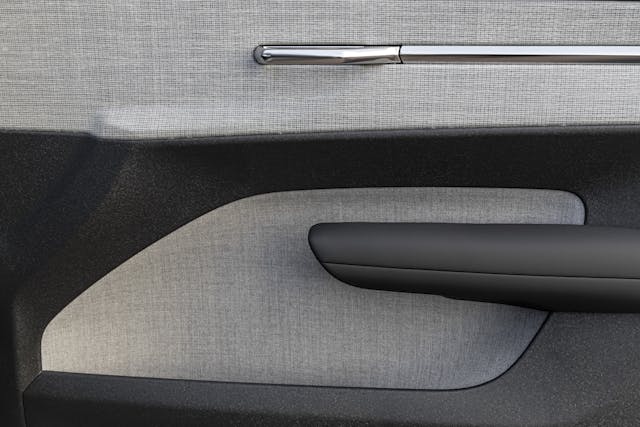
Still, there are upscale touches: The rear hatch was power-operated on the test cars, and the hood is held up by hydraulic struts, not a prop rod.
There are five exterior colors: Moss yellow, which is more of a gold; Crystal white; Cloud blue, Vapor gray, and Onyx black. The body is quite aerodynamic, with a drag coefficient of 0.28.
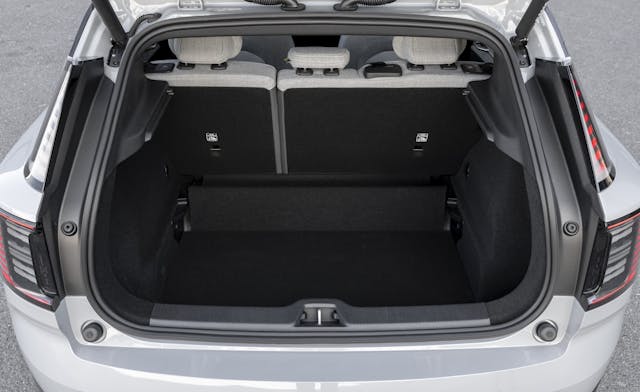
Rear luggage capacity is 14.1 cubic feet, but that doubles with the 60/40 rear seat folded. There’s a “frunk,” but it only has room for a charging cable. There is no conventional glove compartment, but there is storage space beneath the center console, along with a pair of clever slide-out cupholders. Packaging is thoughtful for a car that is just 166.7 inches long, a little over three inches longer than a Chevrolet Bolt and about three inches shorter than a Bolt EUV.
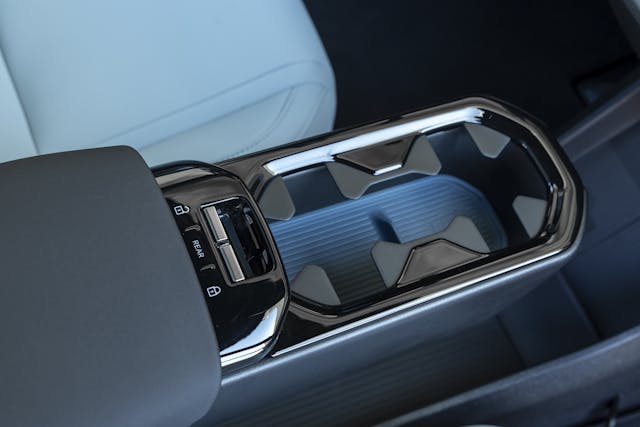
Specs: 2025 Volvo EX30
Price: $36,245 base, $41,100 and $47,900 as tested
Powertrain: One or two permanent-magnet electric motors
Horsepower: 268 rear-drive single motor; 422 all-wheel-drive dual motor
Torque: 253 lb-ft rear-motor version; 400 lb-ft twin motors
Layout: rear- or all-wheel-drive, four-door, five-passenger crossover
Range (estimated): 265/275 miles per charge, twin motor/single motor
0–60 mph: 3.4/5.1 seconds, twin motor/single motor
Curb weight: 3858/4140 lbs, single motor/twin motor
Competitors: Hyundai Kona EV, Chevrolet Equinox EV
On the road, the MacPherson strut front suspension and multilink rear keep the EX30 nicely planted and able to minimize the impact of bumps and potholes. Rubber is of the 18-, 19- or 20-inch Goodyear Efficient Grip SUV variety—we’d like to see how cornering would be improved by some more aggressive treads, but the Goodyears, which will be offered in the U.S., work well enough and presumably aid range. The wheels are quite handsome. Ground clearance is a healthy seven inches. Steering is properly weighted. Brakes feel strong, responsive.
Power is plentiful with the 268-horse single motor; beyond plentiful with the 422 horses supplied by the dual motors. The front motor engages mostly when extra power and/or traction if needed, hence the fact that the dual motor model’s range is only slightly less than the single motor model’s. You can choose one-pedal driving, decelerating using regenerative braking, but the mode is non-adjustable and has to be selected using that same center-mounted screen.
Volvo says the 200-kW single-motor version has a 0 to 60 mph time of 5.1 seconds, with a top speed of 112 mph. The 315-kW dual-motor EX30 has the same top speed, but with a 0 to 60 mph time of 3.4 seconds, you’ll get there more quickly.
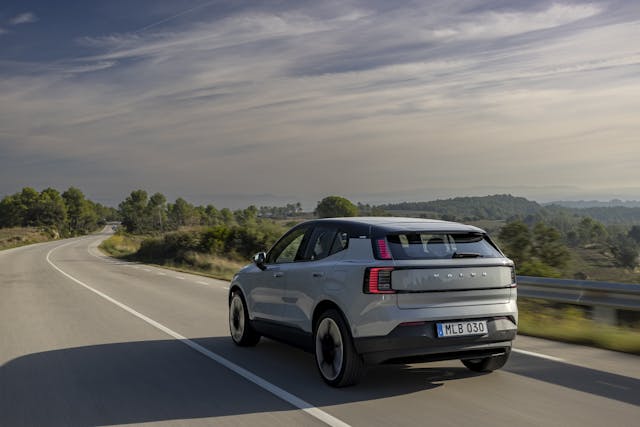
As far as recharging goes, peak DC fast-charge rate is 153 kW. A 50-kW DC fast-charger will take the battery from 10 to 80 percent in 57 minutes, while a 175-kW DC charger will do it in 27 minutes. A 240-volt home charger (Level 2) will fully charge the lithium-ion battery overnight.
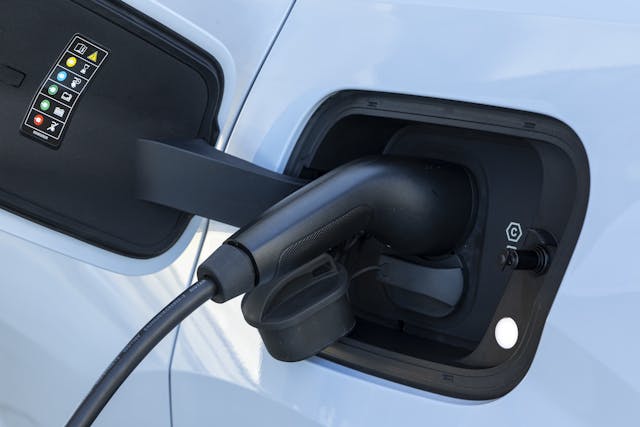
The EX30 is built at Volvo owner Geely’s factory in Zhangjiakou, China, and Volvo recently announced that soon the car will also be built in Ghent, Belgium, too. (Quality control on the test cars was impressive, but it usually is when models are sampled by the international media.) The single-motor version will come in three trim levels: Core ($36,245), Plus ($40,195), and Ultra ($41,895). The dual-motor comes in Plus ($46,195) and Ultra ($47,895). Those prices include shipping. To us, the Ultra single-motor car makes the most sense for the buck. For either model, towing capacity is 2000 pounds.
We predict strong sales for the 2025 Volvo EX30, perhaps sullied only by those still wary of Chinese-built. Regardless, this may just be the product to supply a little spark for the entry-level electric-car market.
2025 Volvo EX30
Highs: Handsome styling, solid performance, de rigeur interior materials and design, attractive price.
Lows: Cramped rear seat room, cargo space could be more generous, center display can be a distraction.
Takeaway: Small but mighty—especially the 422-hp AWD version—the EX30 packs a punch into a budding segment.
***
Check out the Hagerty Media homepage so you don’t miss a single story, or better yet, bookmark it. To get our best stories delivered right to your inbox, subscribe to our newsletters.

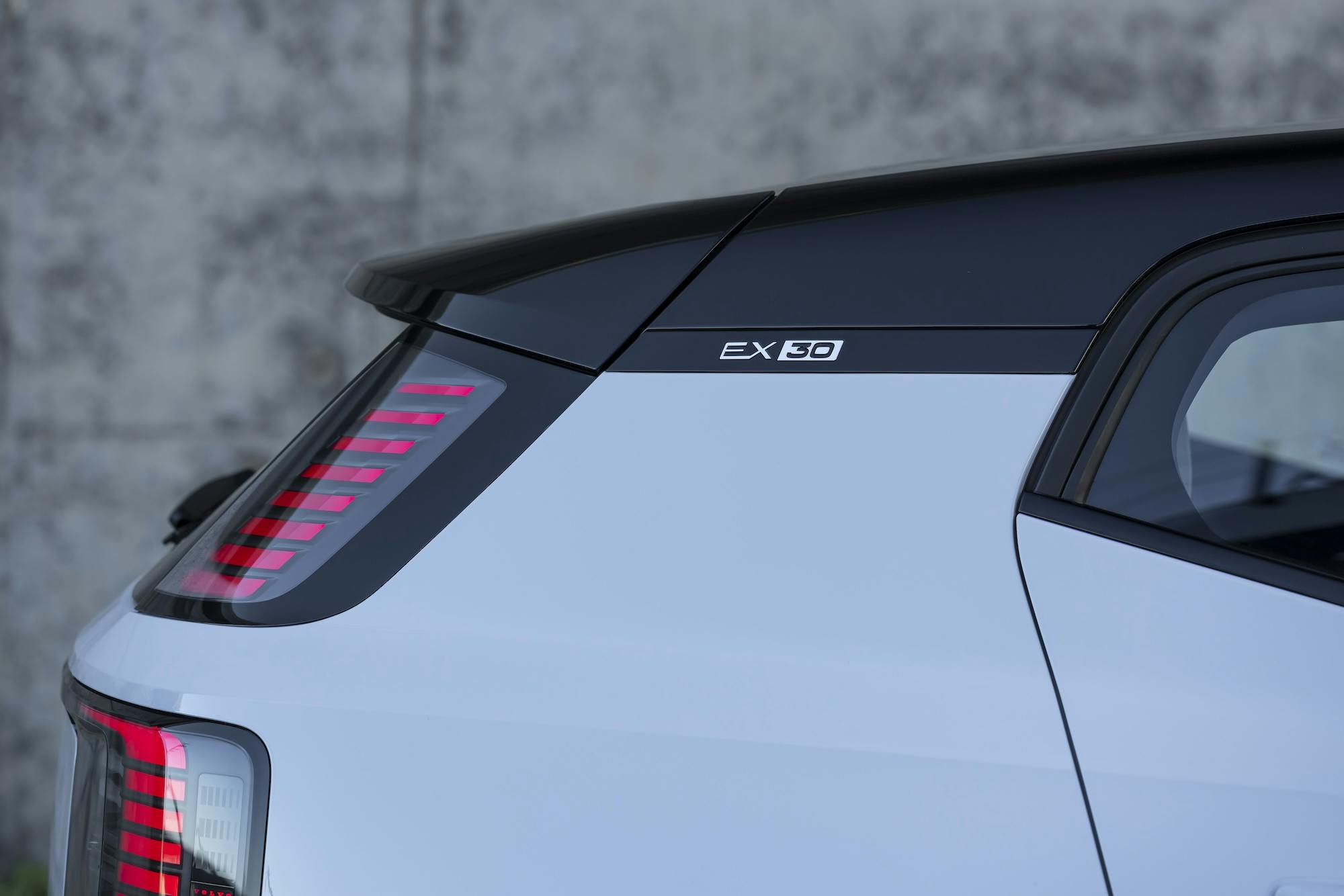
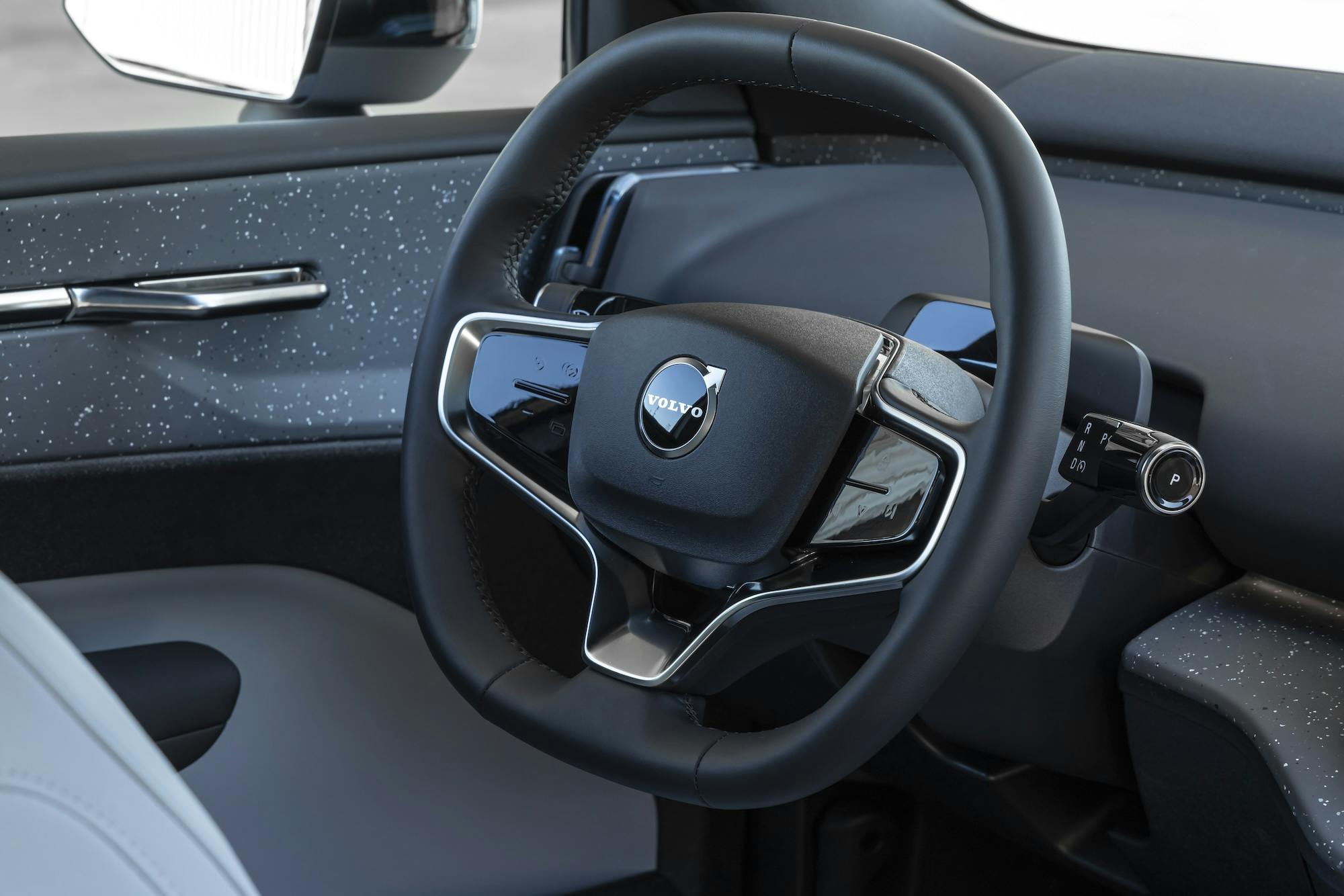
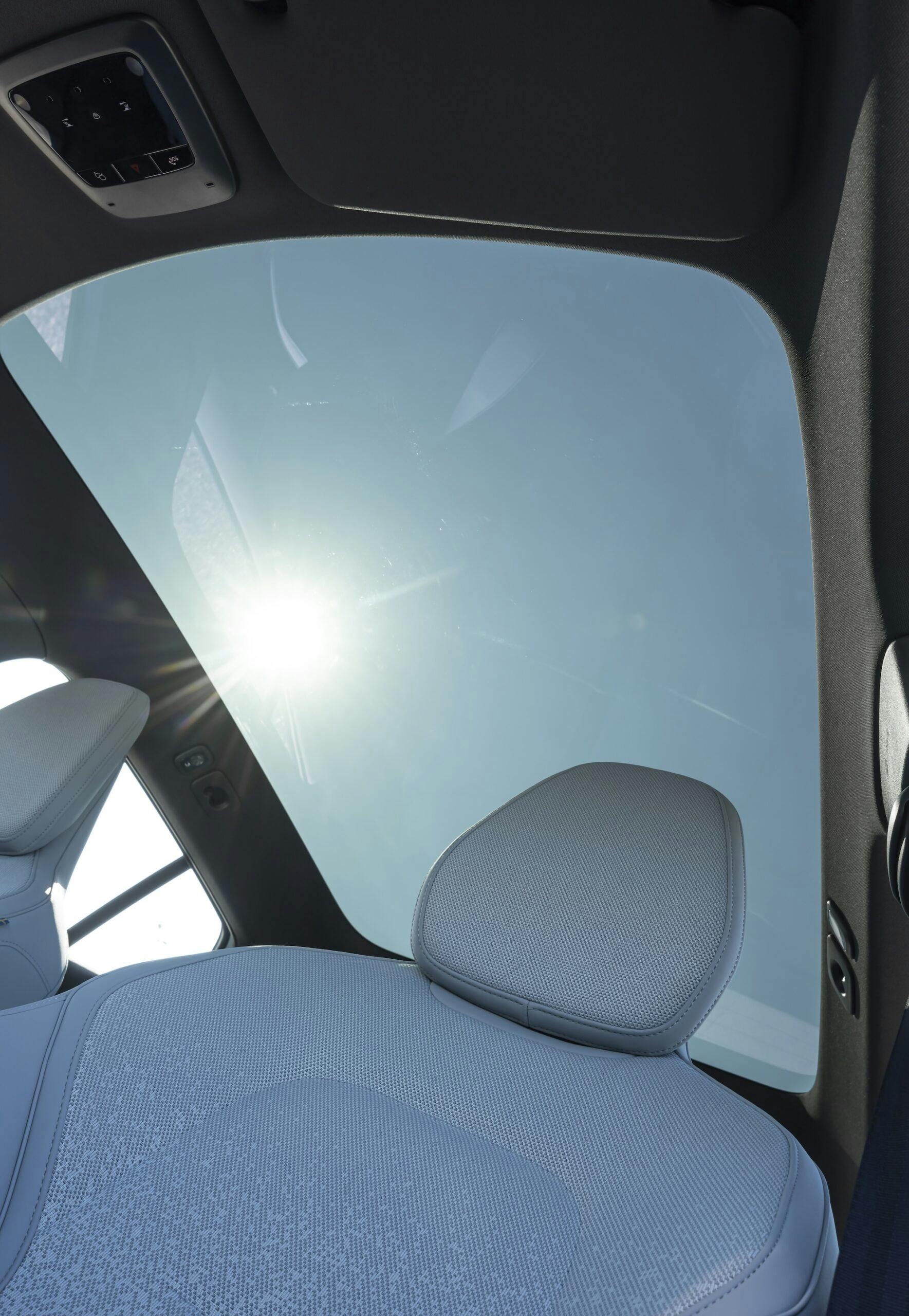

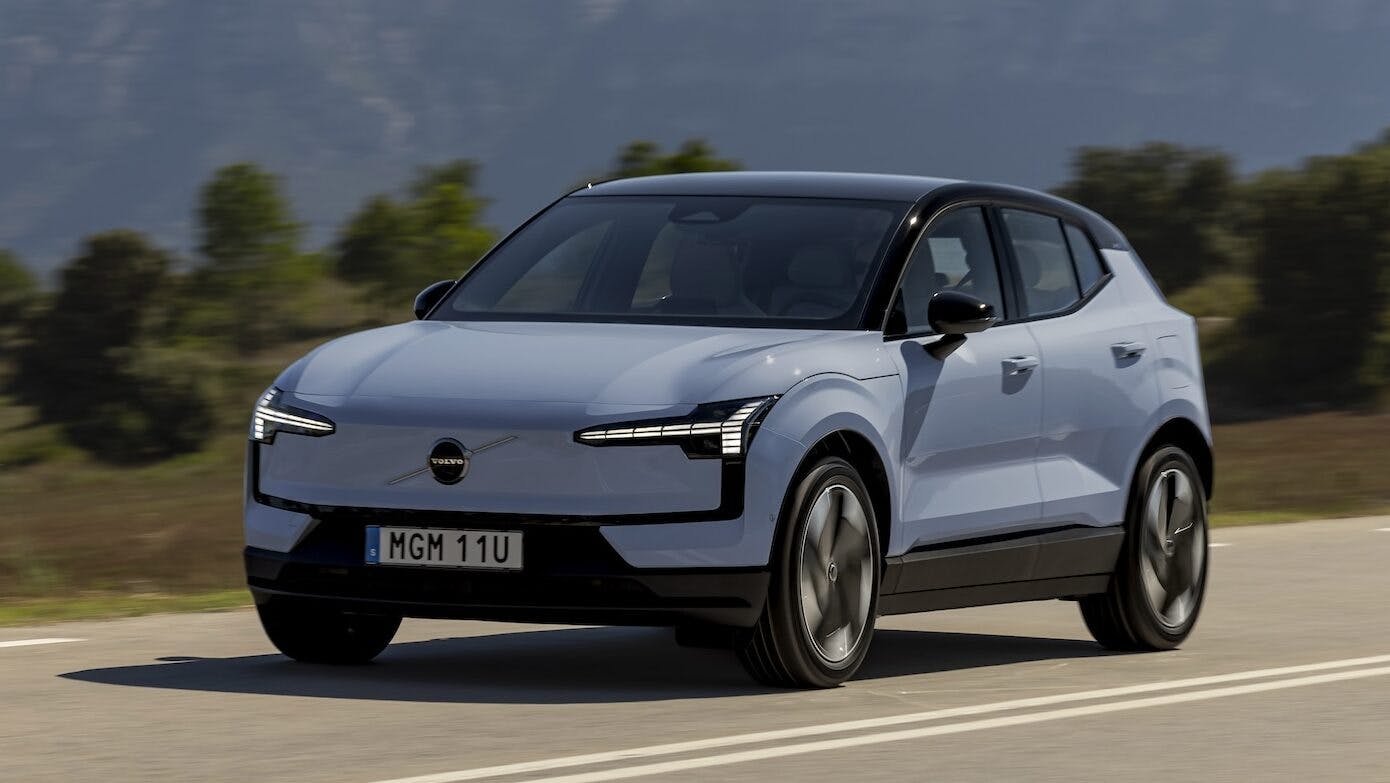


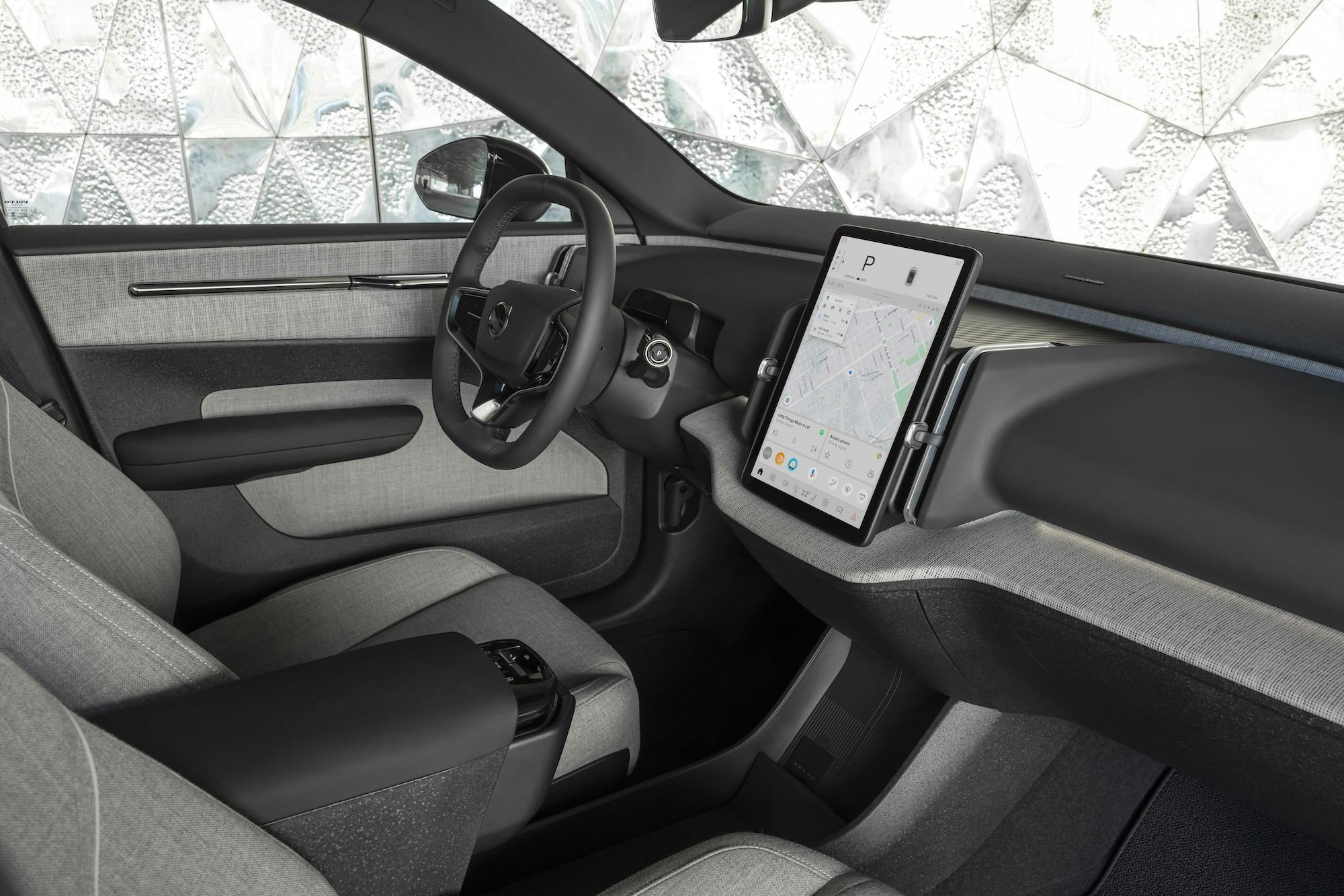
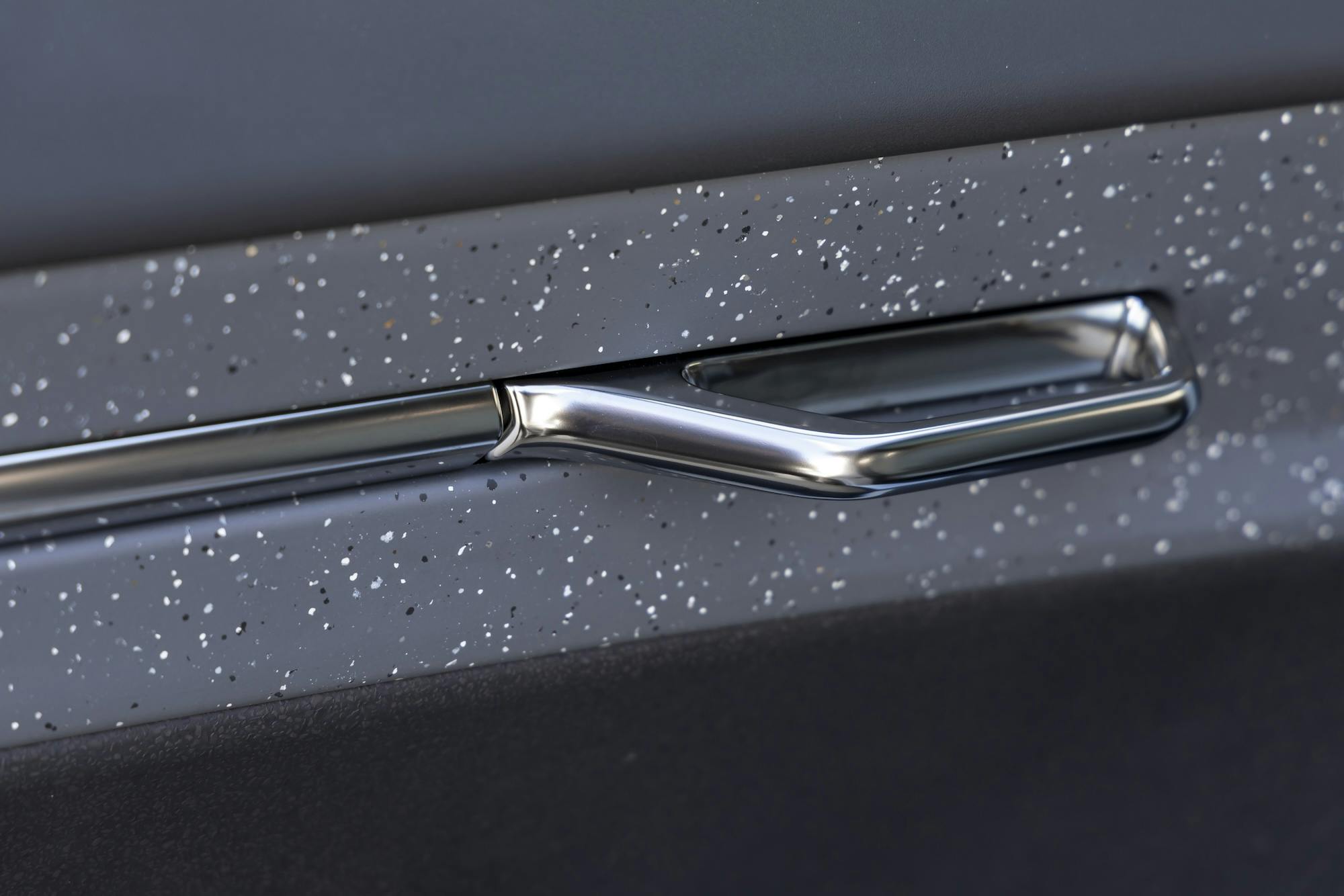

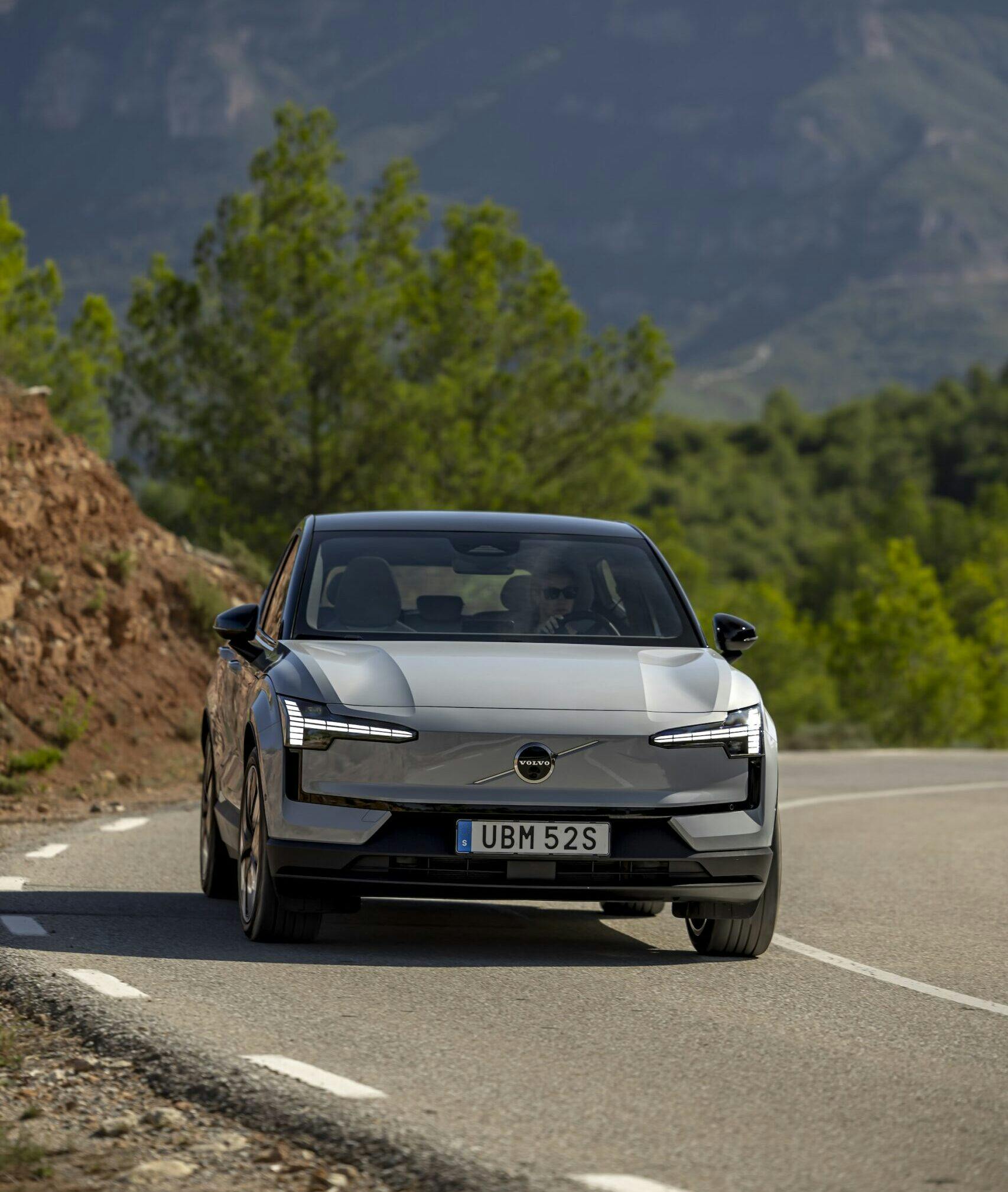
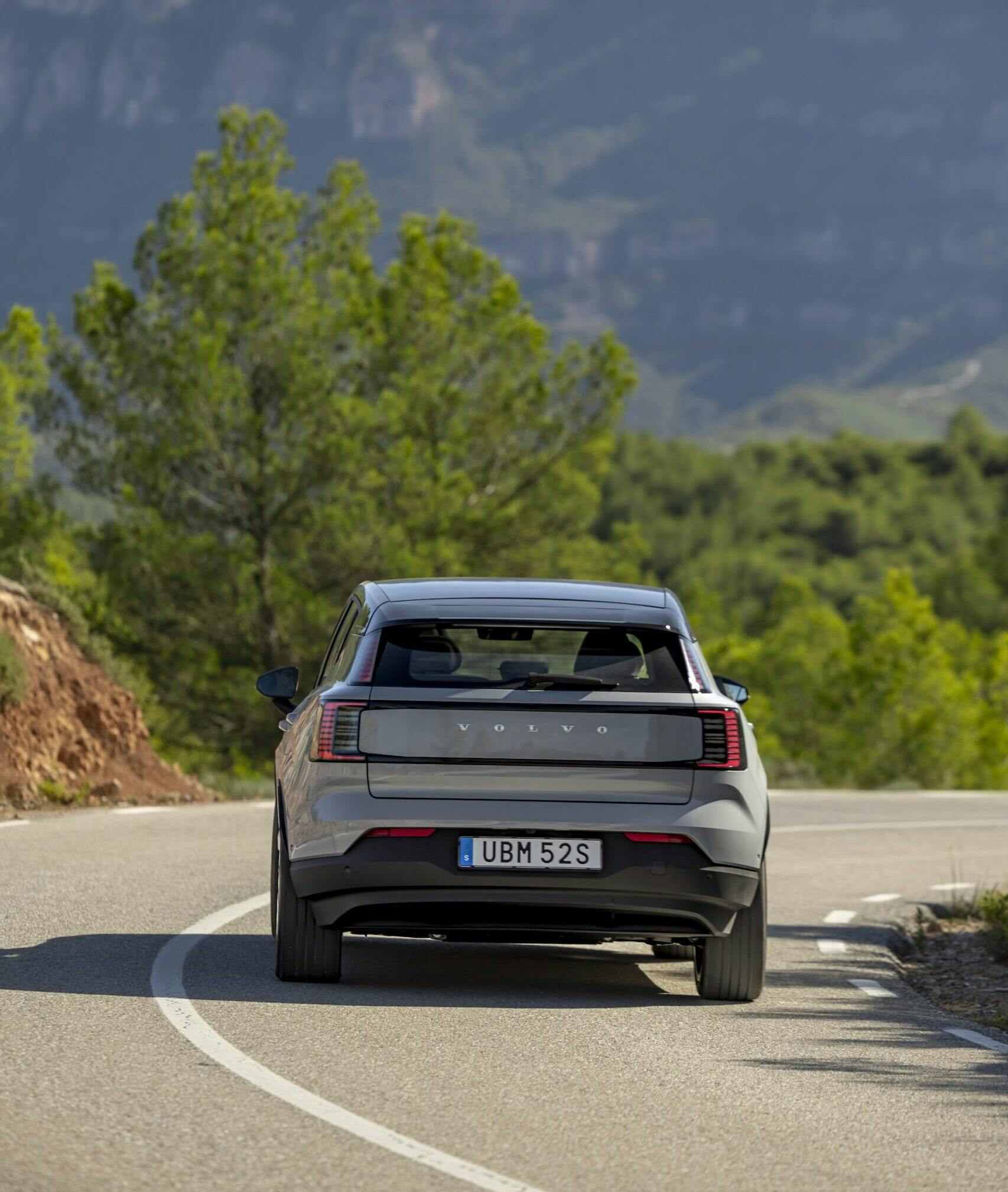
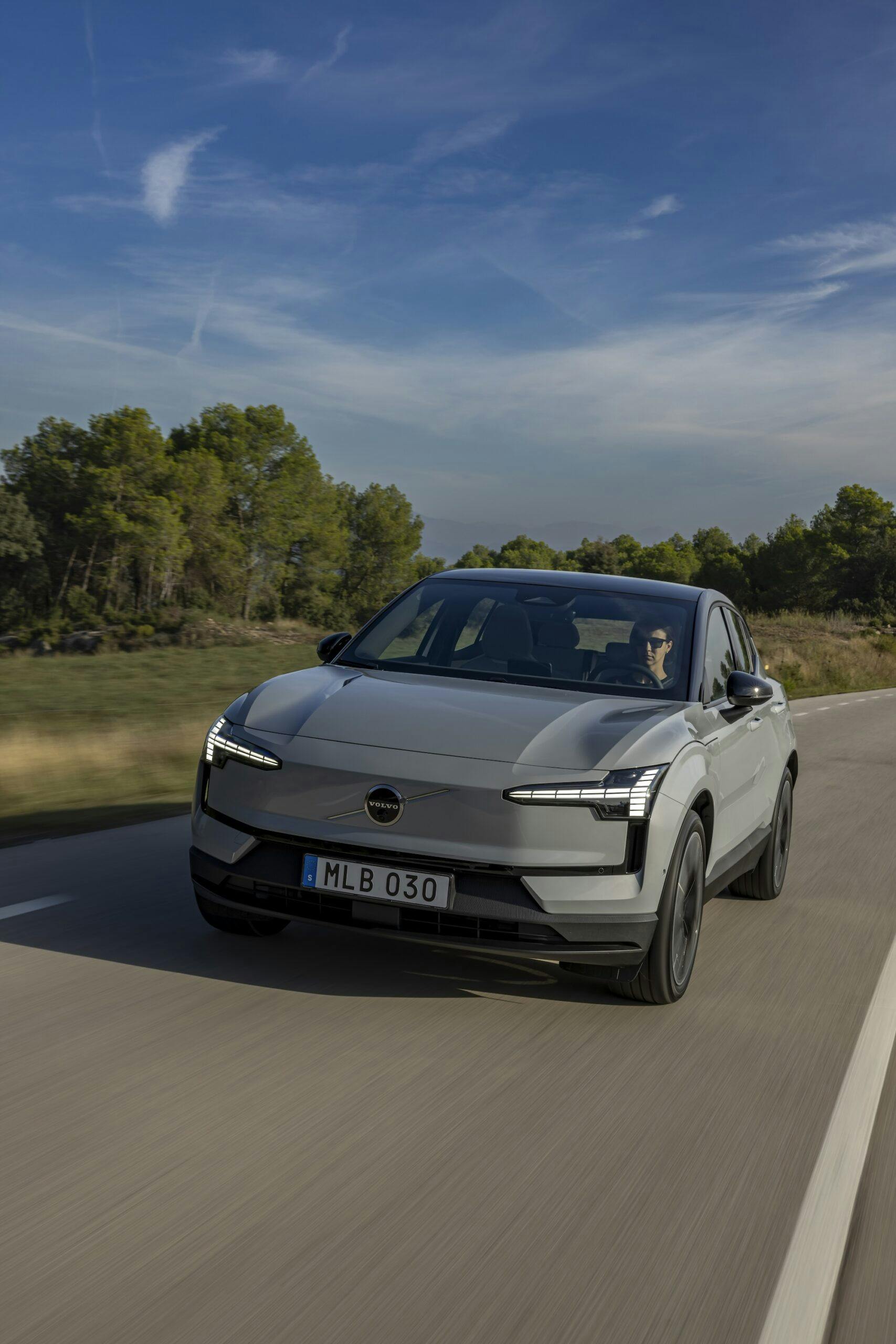
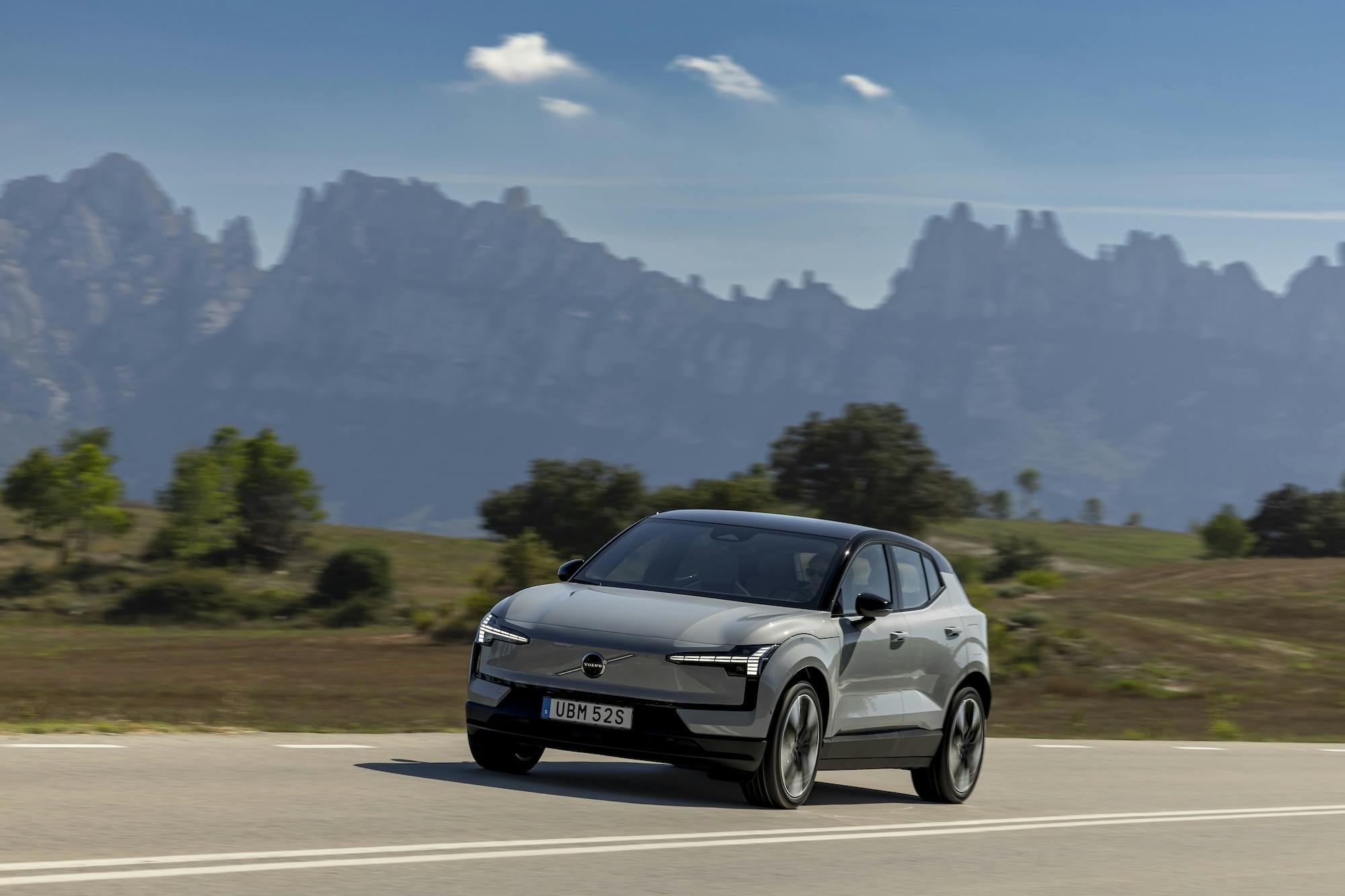

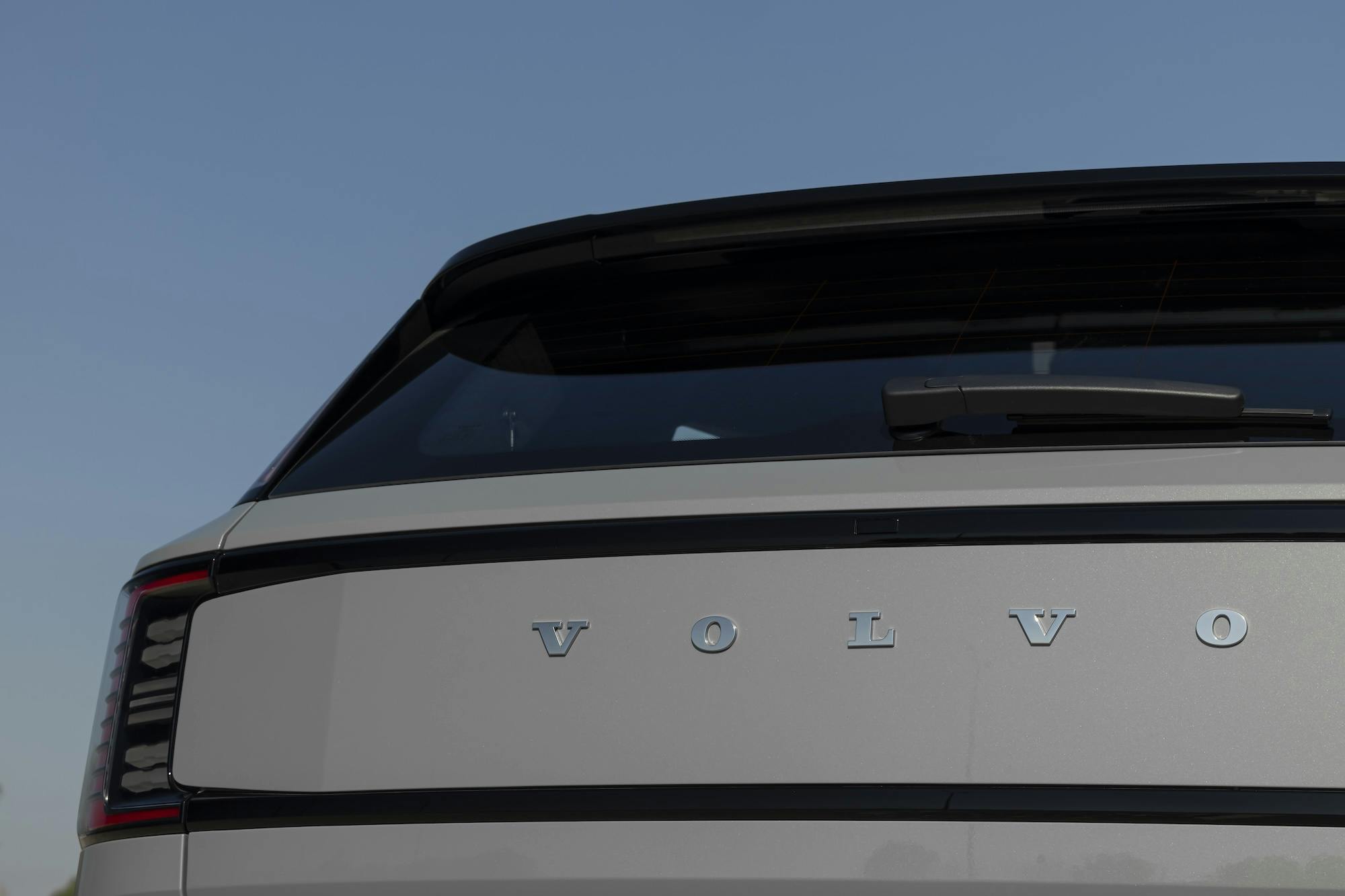


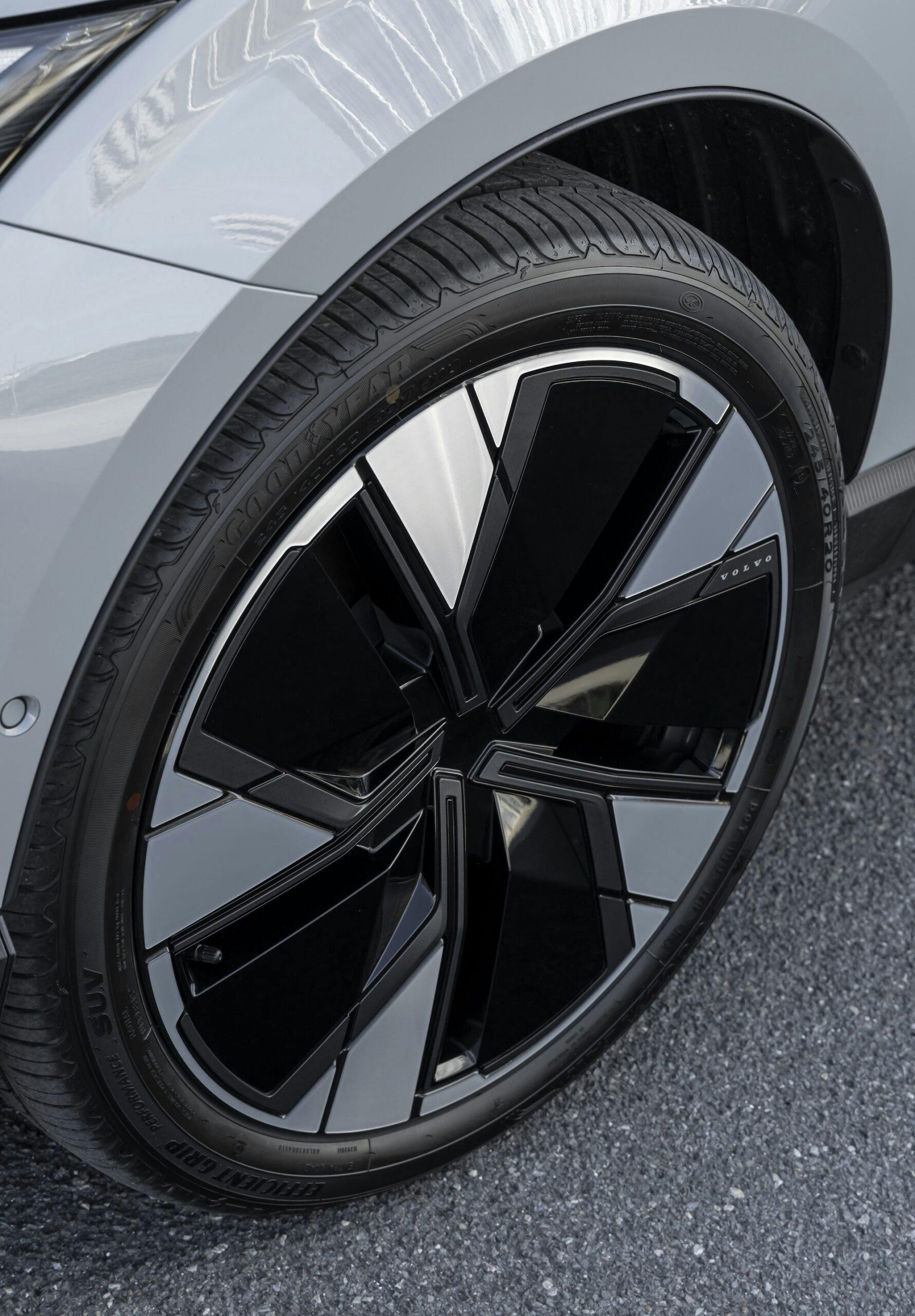

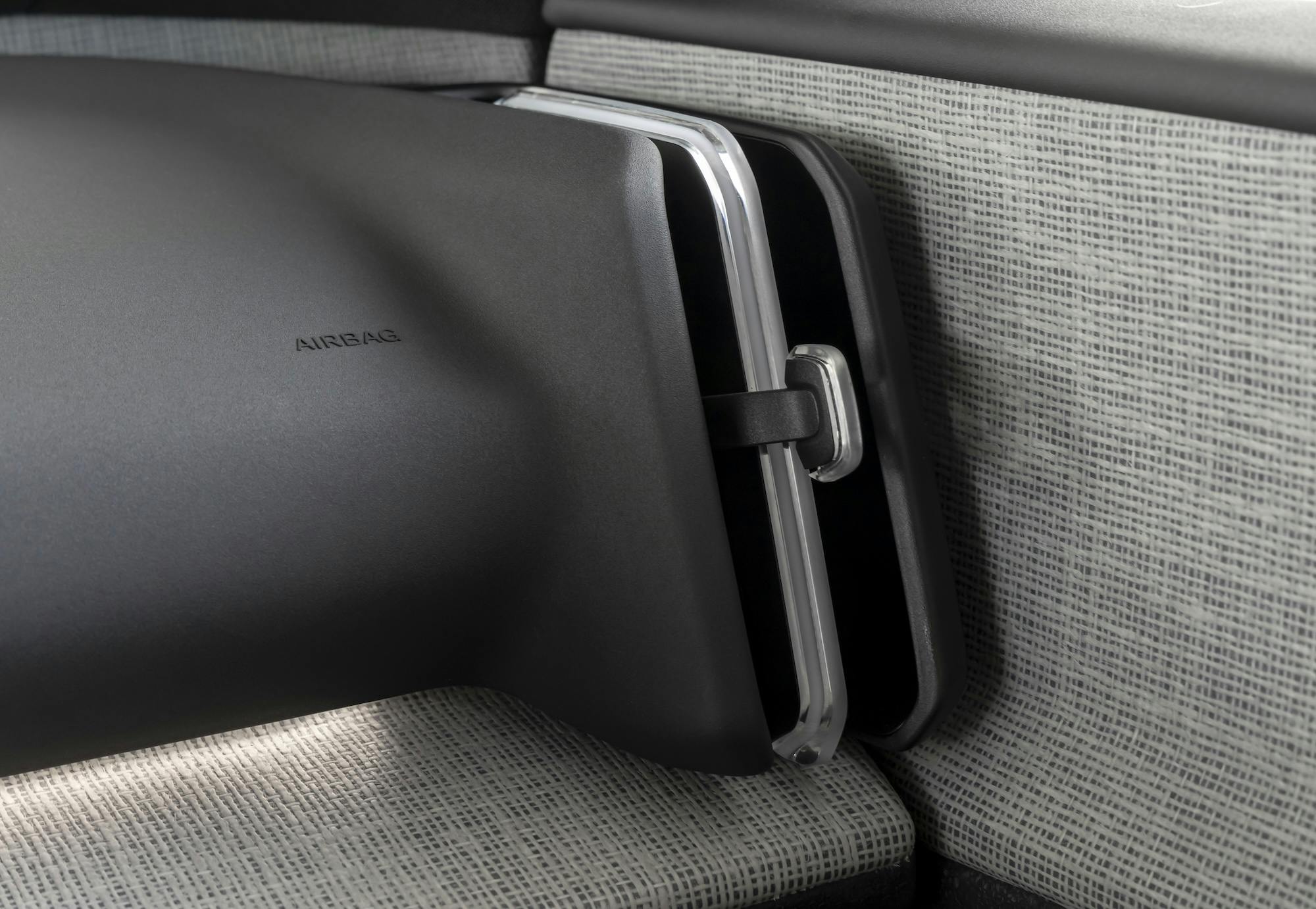

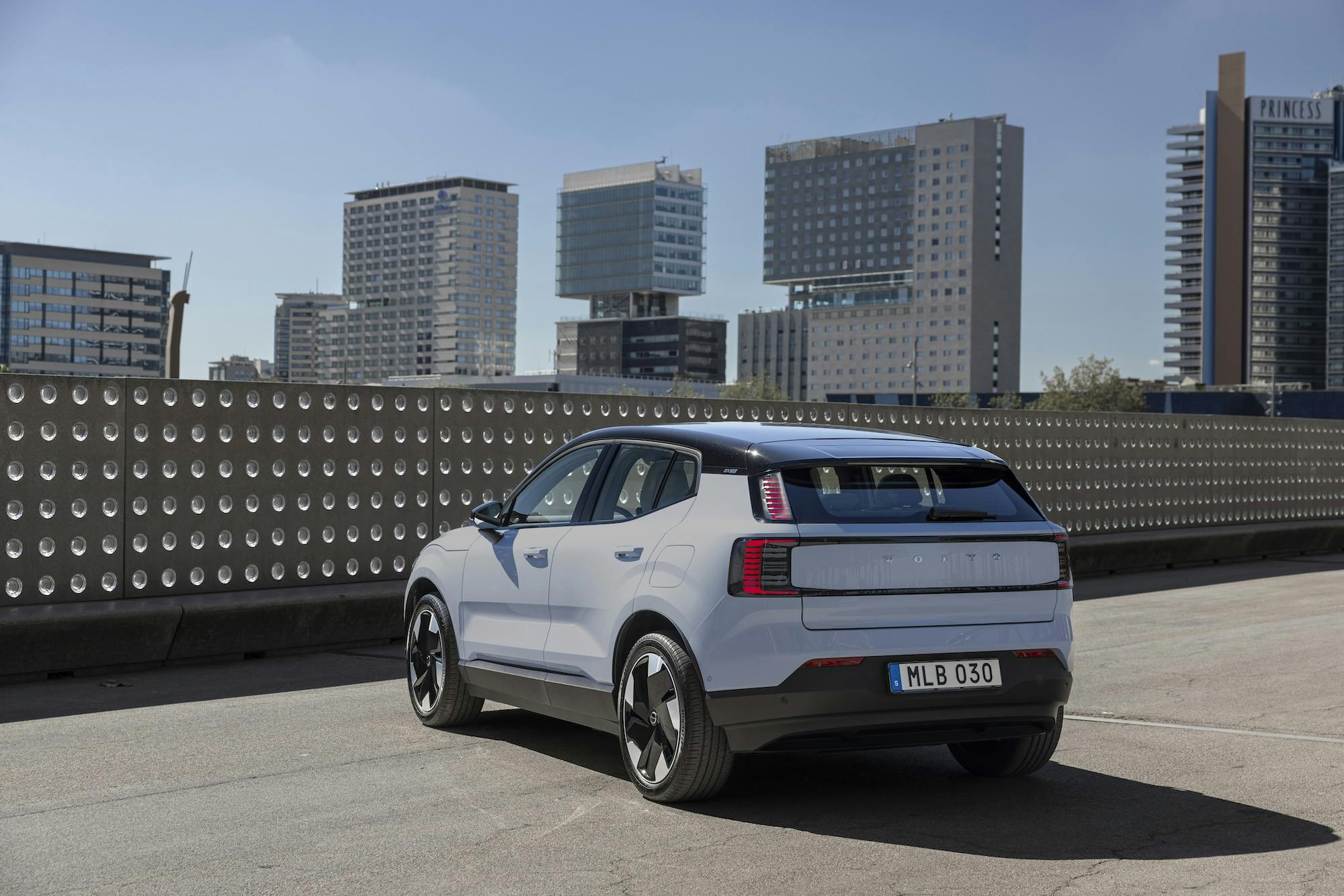
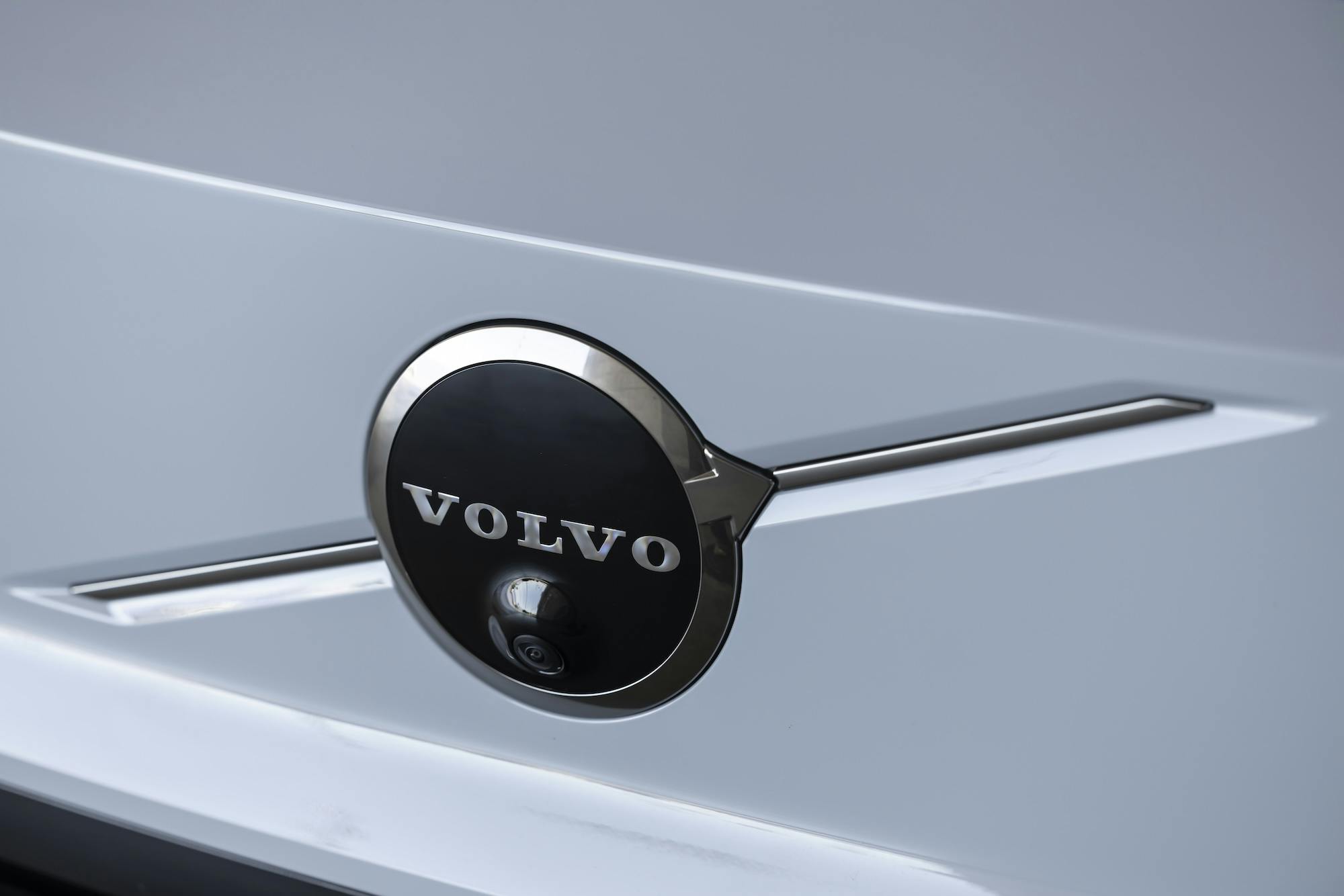

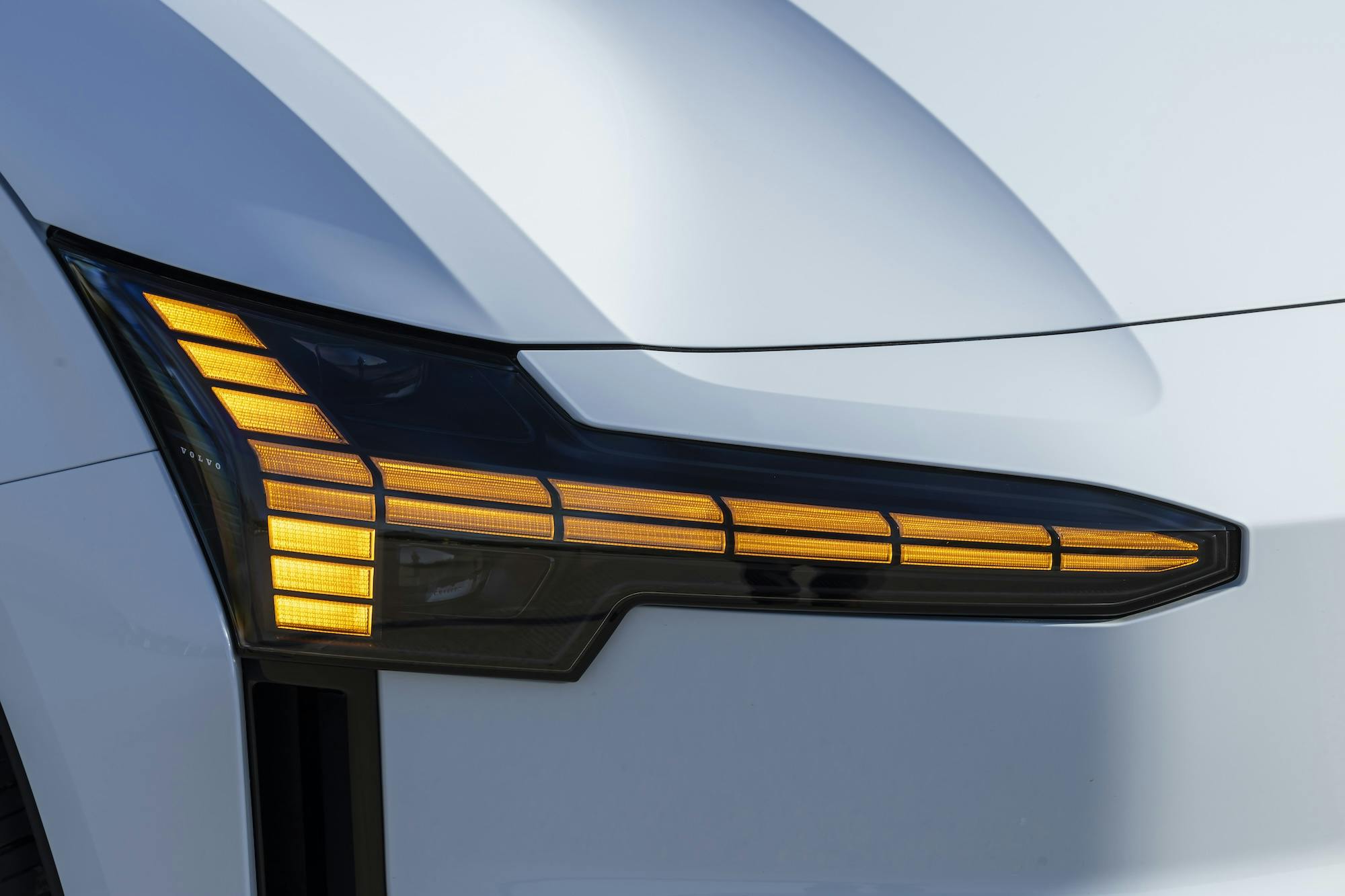
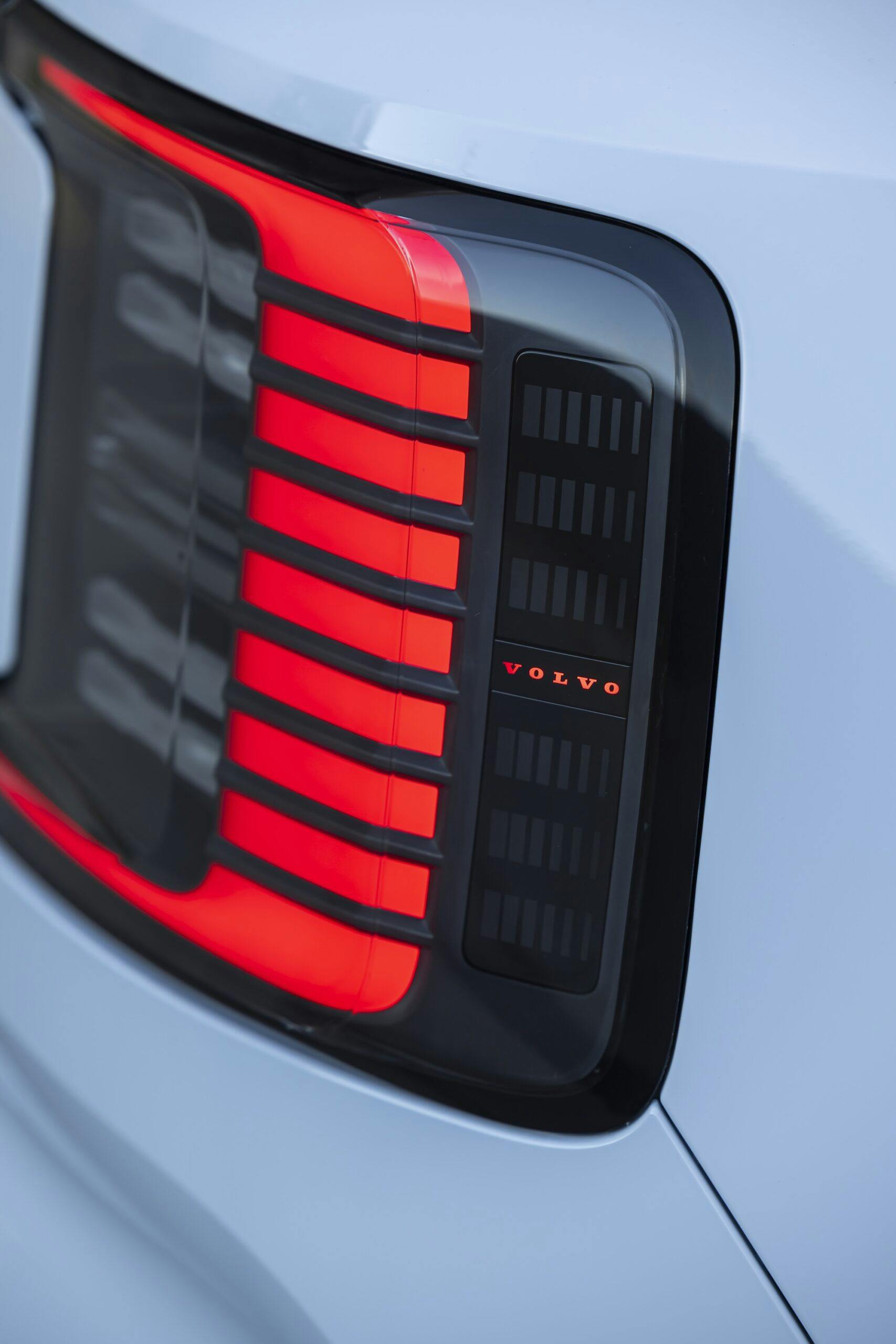
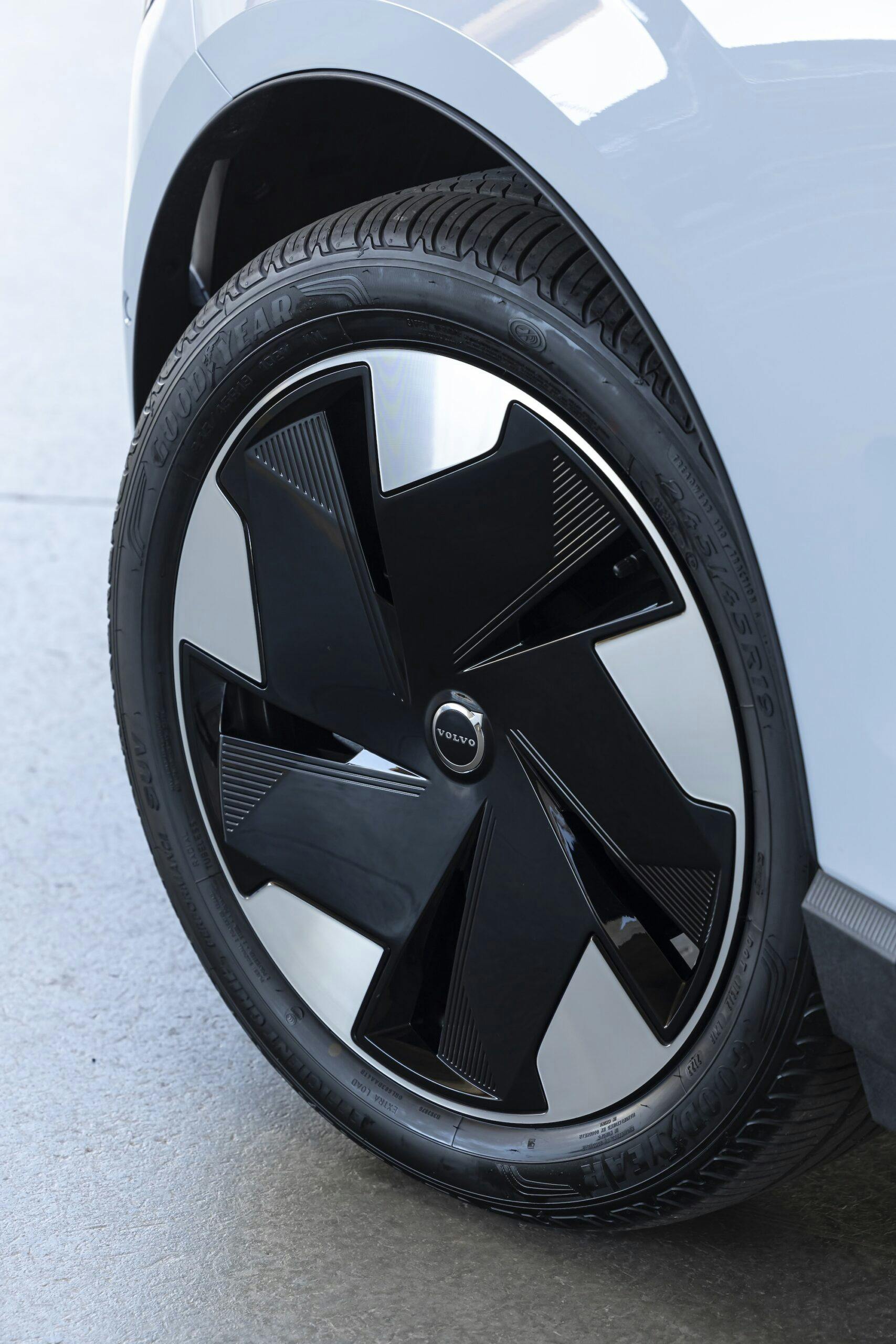


I don’t like to read reviews of new EVs that don’t talk about battery chemistry. That makes a big difference in the vehicle I will buy.